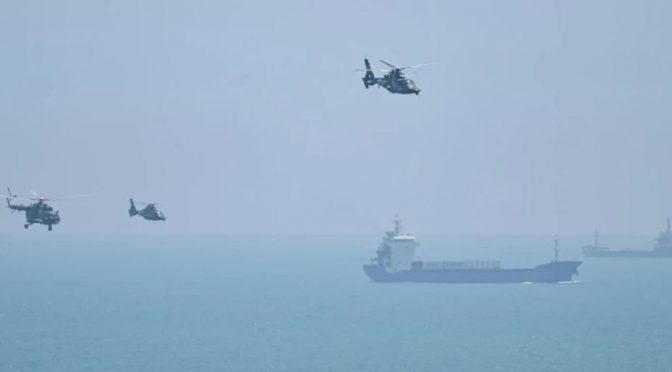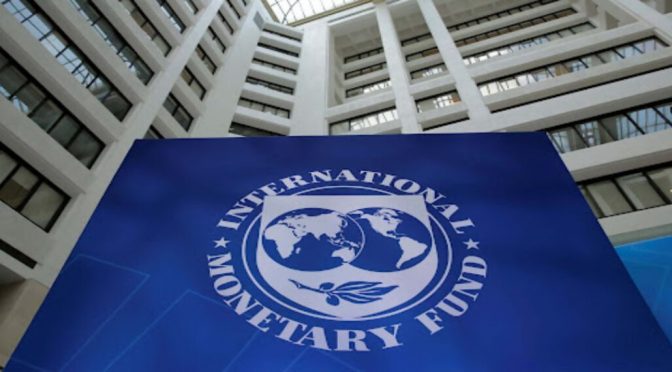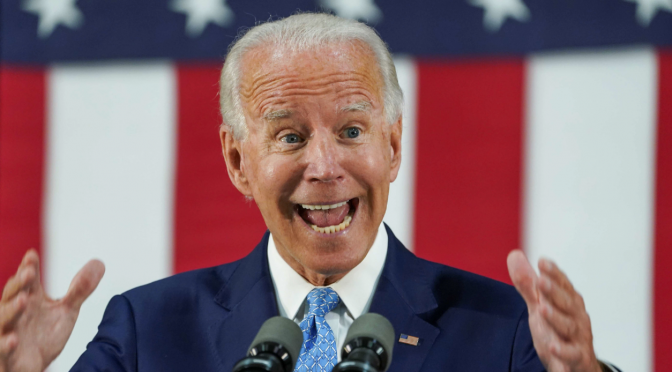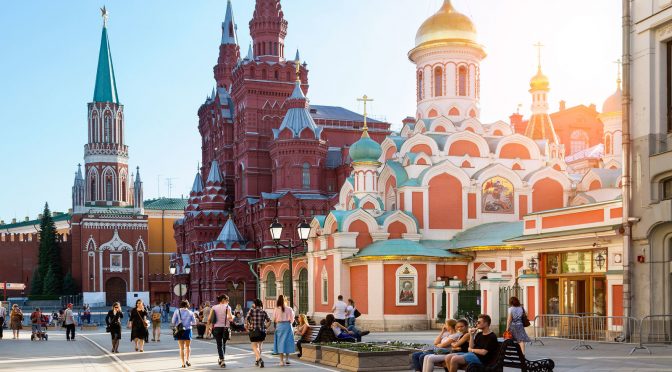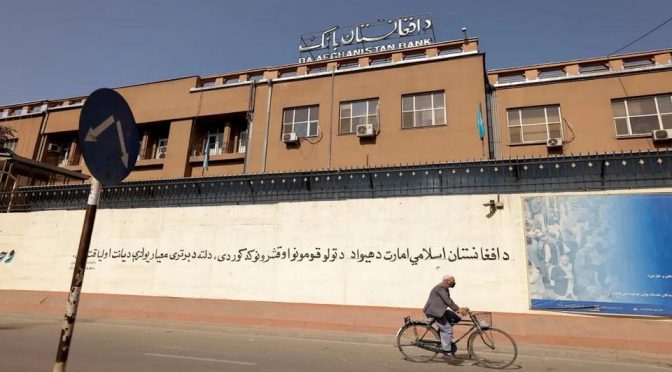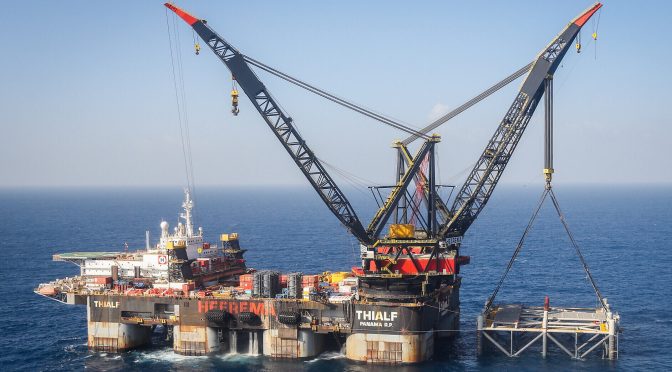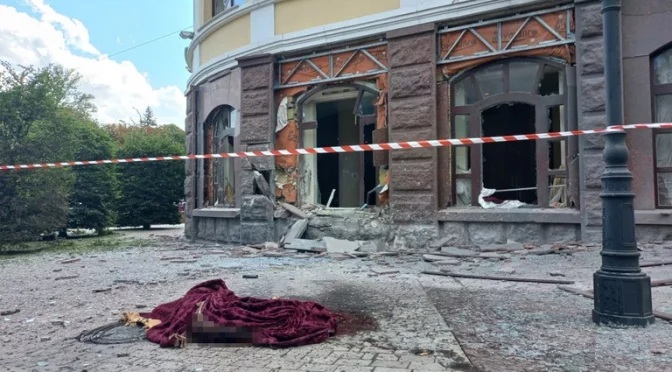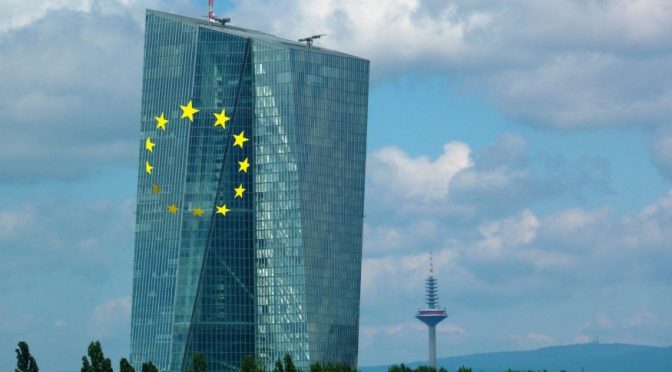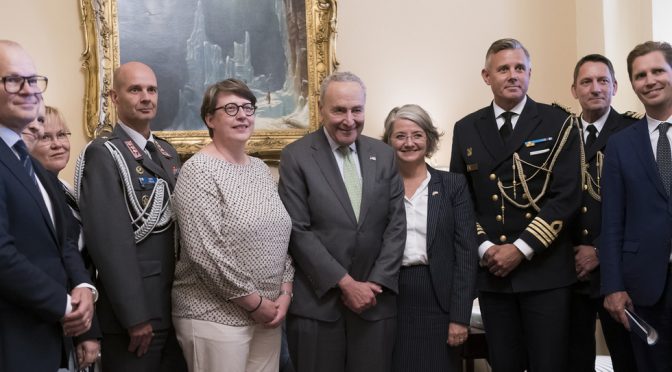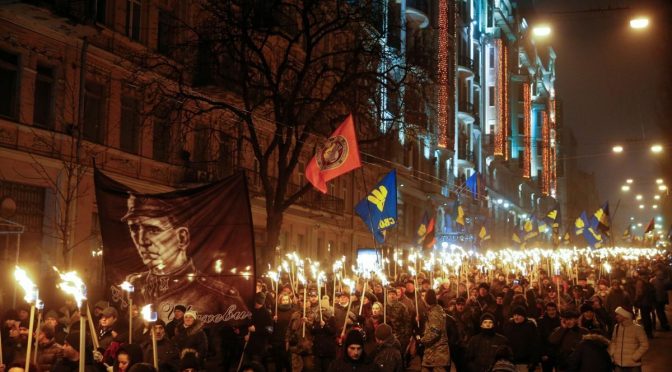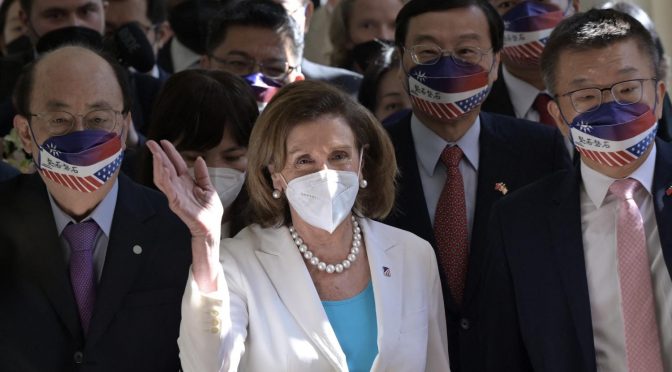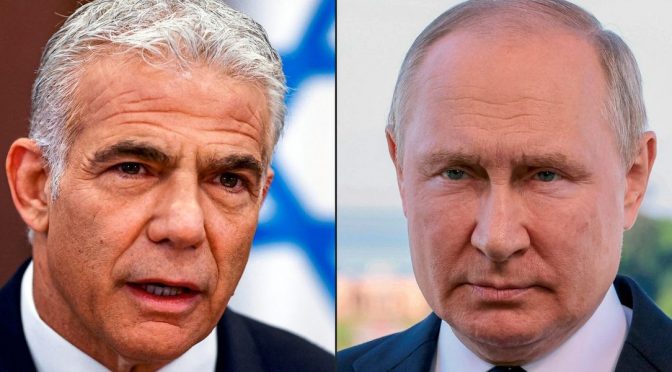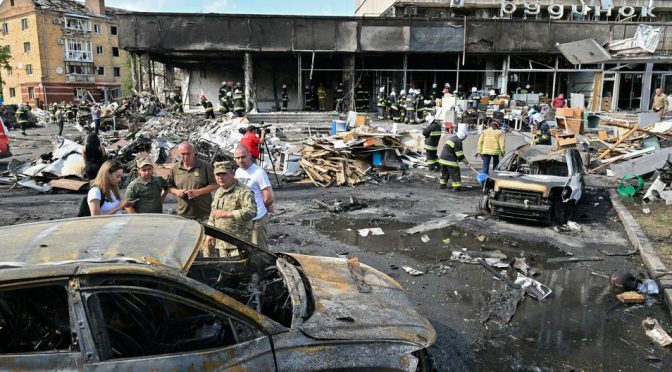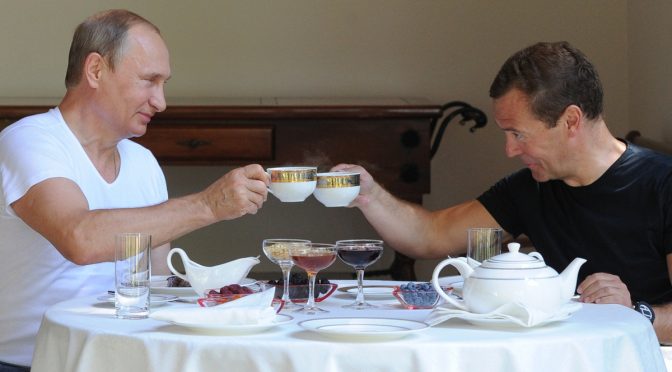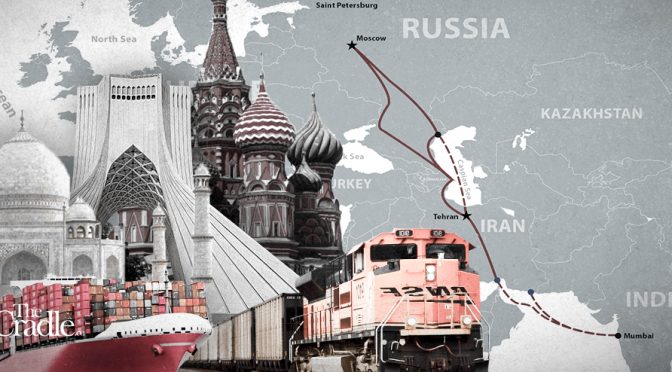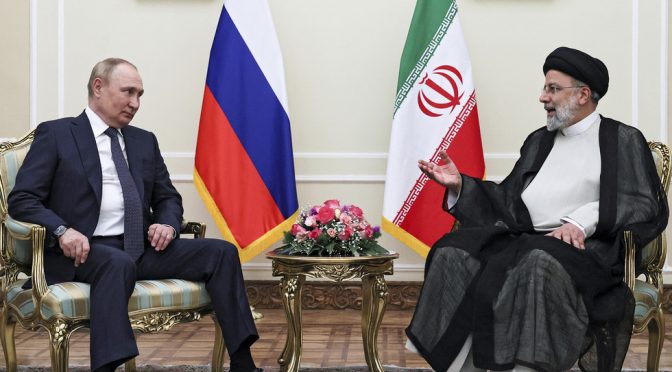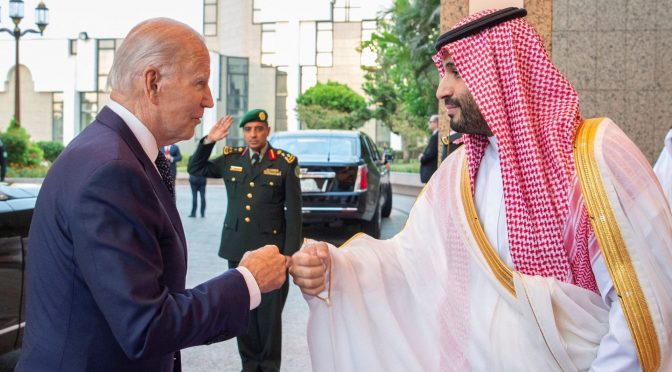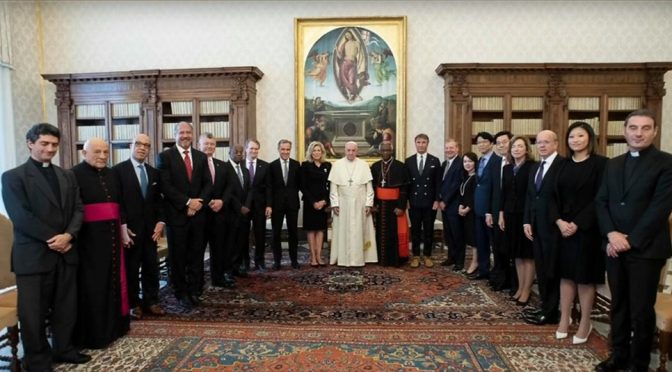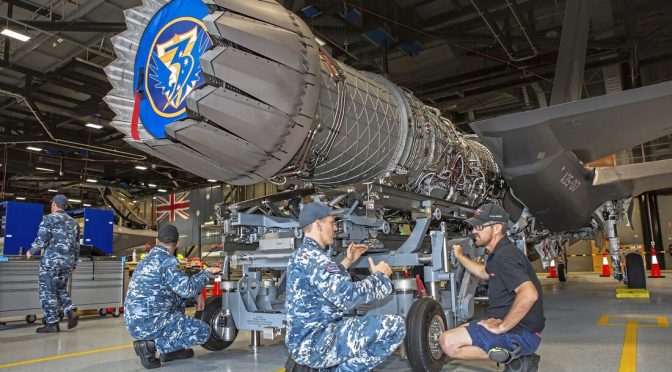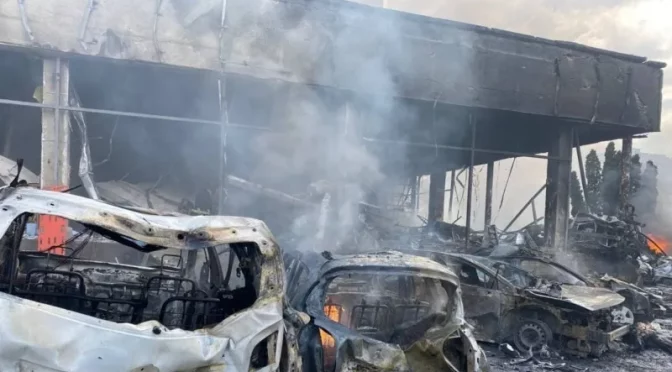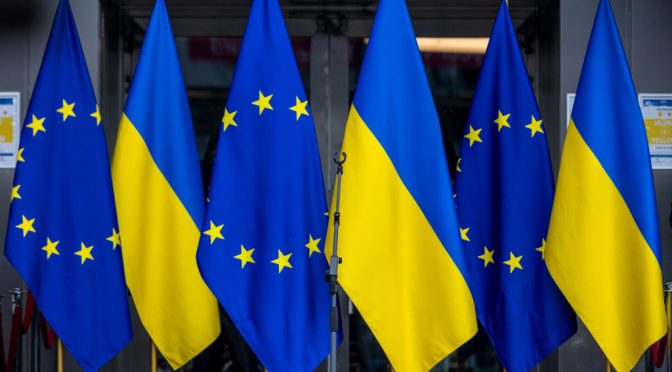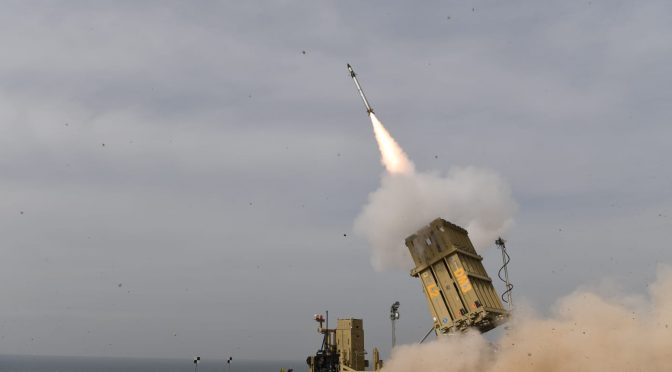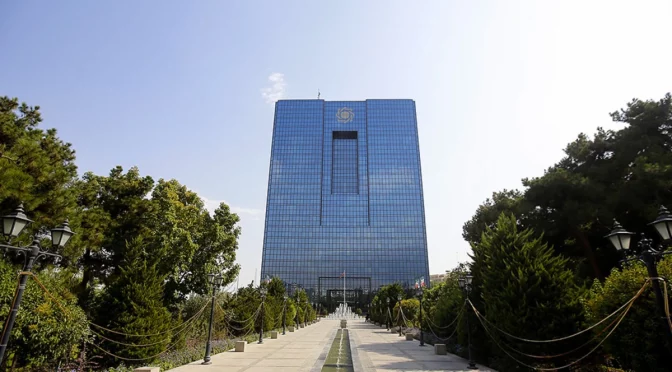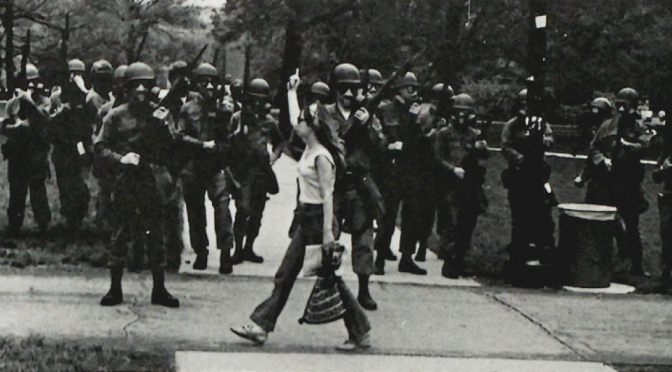An article on the institution’s website makes the case for implant technologies. Human implant technologies will soon become a commodity, a blog post published on the World Economic Forum’s website last week suggests, arguing that there are “solid, rational” reasons for microchipping children with location trackers.
Continue reading ‘Solid’ Reasons to Microchip Kids | WEFThe Only Thing Keeping U.S. and China from War is Getting Thinner
American relations with China in regards to Taiwan have been dictated by years of ambiguous statements and commitments. Now this rhetoric is breaking down and armed conflict seems closer than ever – but is Washington ready to fight over Taiwan, or capable of winning?
Continue reading The Only Thing Keeping U.S. and China from War is Getting ThinnerTriggering A Multi-Trillion Dollar Global Debt Crisis
“And thus it renders more and more evident the great central fact that the cause of the miserable condition of the working class is to be sought, not in these minor grievances, but in the capitalistic system itself.” Friedrich Engels, The Condition of the Working Class in England (1845) (preface to the English Edition, p.36)
Continue reading Triggering A Multi-Trillion Dollar Global Debt CrisisThe “Great Zero Carbon” Conspiracy and the WEF’s “Great Reset”
The globalist Davos World Economic Forum is proclaiming the necessity of reaching a worldwide goal of “net zero carbon” by 2050. This for most sounds far in the future and hence largely ignored. Yet transformations underway from Germany to the USA, to countless other economies, are setting the stage for creation of what in the 1970’s was called the New International Economic Order.
Continue reading The “Great Zero Carbon” Conspiracy and the WEF’s “Great Reset”The Imminent Danger of a Large Scale US-Russia War
The White House keeps insisting that it will not directly involve American soldiers in the war in Ukraine, but it keeps taking steps that will inevitably lead to a large-scale open combat role for the US against Russia.
Among the most recent moves to increase the pressure on the Kremlin, Biden revealed at a NATO summit meeting in Madrid on June 29th that the US will establish a permanent headquarters in Poland for the Fifth Army Corps, maintain an additional rotational brigade of thousands of troops in Romania and bolster other deployments in the Baltic states.
Also, the number of US troops in Europe, currently approaching 100,000, will be increased. Biden also was pleased to learn that Turkey had been enticed to drop its objection to Finland and Sweden joining NATO.
On the way to the NATO summit aboard Air Force One, Biden’s National Security Adviser Jake Sullivan advised that “By the end of the summit what you will see is a more robust, more effective, more combat credible, more capable and more determined force posture to take account of a more acute and aggravated Russian threat.” Presumably Sullivan was reading from a prepared script, but the objective surely seemed to be to heighten tension with Moscow rather than attempt to reduce it and come to some kind of diplomatic settlement.
NATO Secretary General Jens Stoltenberg also did his bit. In an astonishing display of derriere kissing, he responded that the new US force posture commitments were demonstrative of Biden’s strong leadership. What Stoltenberg did not mention was that Biden has been lying for some time about the presence of US military personnel in Ukraine. He let the cat out of the bag back in March, when he told troops belonging to the 82nd Airborne division in Poland that they would soon be going to Ukraine, observing that “You’re going to see when you’re there, and some of you have been there, you’re gonna see —
” It was an admission that US forces are already in place inside Ukraine even though the White House quickly did damage control, asserting that the president continues to be opposed to American soldiers being directly engaged in the fighting. Biden also claimed that the US was working to “keep the massacre [of Ukrainians] from continuing.”
Again, the language was hardly designed to make some room for a possible accommodation with Russia to negotiate an end to the fighting.
And now there is a New York Times report entitled “Commando Network Coordinates Flow of Weapons in Ukraine, Officials Say: A secretive operation involving US Special Operations forces hints at the scale of the effort to assist Ukraine’s still outgunned military.”
The article describes a more active US role in Ukraine than the Biden Administration has been willing to admit publicly. Back in February, before intervened in Ukraine, the US reportedly withdrew its own 150 military instructors, many of whom were training Ukrainian soldiers on newly acquired American produced weapons. However, some Central Intelligence Agency (CIA) paramilitary operatives and special ops troops continued their service in the country secretly, directing most of the intelligence flow the US is sharing with Ukrainian forces.
In addition to that, special ops soldiers from Washington’s NATO allies have been managing the movement of weapons and equipment into Ukraine and providing some specialized training. It has also been reported that British SAS commandos are actually guarding President Volodymyr Zelensky.
The NYT specifies, citing American and other Western officials, that the soldiers and CIA officers are currently not on the front lines with Ukrainian troops. Also according to the Times, even though the US and NATO member states have not acknowledged the presence of their paramilitaries soldiers in operational roles in Ukraine, Russia and other intelligence services around the world are aware of this.
The New York Times report appears to be generally correct, though it does omit some details, some of which I have been hearing from former colleagues in the intelligence services. There has been considerable overt training at the Grafenwoehr German army base as well as at the Ramstein US Air Base to familiarize the Ukrainians with the new weapons arriving. Other NATO countries are also participating in the training.
Meanwhile, the cadres of special operations soldiers and intelligence personnel operating primarily in western Ukraine are not in uniform and many of them are working under various contrived cover designations, including sometimes loose affiliations with foreign embassies and NGOs. There are also a conventional CIA Station, a group from the National Security Agency and a Military Attache’s office in the recently reopened US Embassy in Kiev.
All of the above means that Biden and other western leaders have been dissimulating regarding their active participation in the Russia-Ukraine conflict. Apart from his possible gaffe, Biden will not admit that there are American boots already on the ground, but they are there and are playing a major role in both logistics and intelligence sharing. The potential downside for the president could come when some of these soldiers in mufti get killed or, worse, captured and start to talk about their role.
Retired US Air Force Lt. Col. Karen Kwiatkowski, a former analyst for the US Department of Defense, observes that deploying plausibly deniable non-uniformed personnel “is completely typical of the initial stages of a US-backed long war, and for long-term political manipulation of the target country. This is the future that neoconservative ‘strategists’ in DC and their British and European allies imagine for Ukraine.
Rather than a negotiated conclusion, with a new Ukrainian role as a neutral and productive country, independent of both Russian and US political influences, the US government and CIA see Ukraine as an expendable yet useful satrap in its competition with the Russian Federation.”
Former CIA analyst Larry Johnson sees the activity in stark terms, while also commenting that the CIA has not won a semi-clandestine insurgent war in forty years. He observes that “Ukraine is a proxy; the West is trying to destroy Russia, it’s that simple. It would be one thing if Russia was the most evil, oppressive, authoritarian regime in the world. It’s nowhere even close. Even though the West keeps trying to portray Russia as such. The fact of the matter is, the West wants the resources that Russia has and it wants to control Russia. [But] Russia is not about to be controlled.”
In other words, Washington might be seeking an unending war entangling Russia and limiting its options globally. The Biden Administration has staked its reputation and possible political future on enabling Ukraine to survive without succumbing to Russian territorial demands. It is a risky and even dangerous policy, both in practical terms and politically.
The persistence of the Ukrainians in their defense is largely a product of US and Western Europe guarantees that they will do all that is necessary to support Zelensky and his regime, which is already seeking $750 billion in aid for “reconstruction.” If western military casualties begin to surface, the political support for the Ukraine war will begin to fade in Washington and elsewhere and there will be consequences in the upcoming midterm US elections in November.
A final comment on the Times piece is in response to the question why it has appeared at all at the present time.
The mainstream media has been a cheerleader for aggressive US support of Ukraine and Zelensky, but now it is beginning to step back from that position, as have also the Washington Post and other media outlets. Perhaps they are becoming convinced that the game plan being promoted by Washington and its European allies is unlikely to succeed at great cost to the respective economies.
Larry Johnson puts it this way:
“I think the purpose of this article coming out now is just to lay the groundwork for why we can’t put or shouldn’t put any more US military personnel or even CIA personnel inside Ukraine because continuing to put US personnel…inside Ukraine to train is becoming too risky because of Russia’s success on the battlefield.”
One might also add that it is exceptionally dangerous. A misstep or even a deliberate false flag coming from either side could easily make the war go nuclear.
The Western Strategy to Dismantle the Russian Federation
Renewing the strategies of Germany during the First World War and of the United States and the Ukrainian integral nationalists during the Cold War, the Westerners have just created a Forum of the free peoples of Russia. The aim is to prolong the break-up of the USSR, to create separatist movements and, ultimately, to proclaim the independence of twenty regions of the country.
Continue reading The Western Strategy to Dismantle the Russian FederationEscalation of Hybrid War Against El Salvador: US Compares Prez Nayib Bukele to Hitler, Covert Support of Terrorist Gangs
The Hybrid War waged by the US on multiple fronts against El Salvador had escalated by November 2018 as punishment for establishing relations with China, accepting that Taiwan is only a province.
Continue reading Escalation of Hybrid War Against El Salvador: US Compares Prez Nayib Bukele to Hitler, Covert Support of Terrorist GangsOver 70 Economists Call for Biden Admin to Return Afghanistan’s CB Reserves
More than 70 economists sent a letter to President Joe Biden and Treasury Secretary Janet Yellen today urging them to allow the central bank of Afghanistan access to $7 billion in foreign reserves that the Biden administration blocked access to last year following the Taliban takeover of the Afghan government and the US military withdrawal from the country.
Continue reading Over 70 Economists Call for Biden Admin to Return Afghanistan’s CB ReservesTime for Palestine to Claim its Stolen Gas
Hezbollah has threatened Israel with war if Lebanon is not allowed to exploit its share in the Karish gas field. Now, the Palestinian resistance may do the same over their “stolen gas” off the Gaza Strip.
Continue reading Time for Palestine to Claim its Stolen GasWhy Was Former President Trump’s Mar-a-Lago Estate Raided?
“With all of the uninvestigated and unpunished crimes that Hillary and the Clintons have committed; with all of the uninvestigated suspected insider trading that Pelosi has committed; with all of the KNOWN crimes of the Biden Family; Trump gets raided?” – Cynthia McKinney, former member of US Congress
Continue reading Why Was Former President Trump’s Mar-a-Lago Estate Raided?Russia and Turkey Reach Deal to Ditch Dollar in Trade
Ankara agrees to pay for some of Russian natural gas supplies in rubles. Russia and Turkey have reached an agreement in principle to switch some of the payments for Russian natural gas to rubles as part of deepening trade ties between the two countries, the Turkish energy ministry announced on Thursday.
Continue reading Russia and Turkey Reach Deal to Ditch Dollar in TradePutin’s Syrian Peace Plan with Erdogan
Russian President Vladmir Putin and Turkish President Recep Erdogan held a four-hour meeting on August 5 in Sochi which may change the course of the Middle East, and end the US occupation of Syria.
Continue reading Putin’s Syrian Peace Plan with ErdoganUS-China Chip War Continues: Geopolitics and the Semiconductor Industry
As the tension between the US and China mounts as a fall-out of Nancy Pelosi’s provocative Taiwan visit, the technology war between the two is also taking a new turn. Both houses in the US Congress have approved a $280 billion plan – The Chips and Science Act – to boost US chip manufacturing.
Continue reading US-China Chip War Continues: Geopolitics and the Semiconductor IndustryWhy the West is Easing Its Sanctions on Russia
If you ask a random EU official if the bloc should continue trying to punish Russia for its invasion of Ukraine, you will invariably get a positive answer.
Continue reading Why the West is Easing Its Sanctions on Russia77th Year after the Nagasaki Bombing: Unwelcome Truths for Church and State
77 years ago (August 9, 1945) an all-Christian bomber crew dropped an experimental plutonium bomb on Nagasaki City, Japan, instantly incinerating, asphyxiating and/or vaporizing tens of thousands of innocent civilians, mostly women and children. Very few Japanese soldiers were killed by the bombs.
Continue reading 77th Year after the Nagasaki Bombing: Unwelcome Truths for Church and StateUkraine Bombed A Donetsk Hotel Full of Journalists
Another attack from Kiev has hit central Donetsk, targeting a funeral and a hotel where numerous reporters stay and work.
Continue reading Ukraine Bombed A Donetsk Hotel Full of JournalistsUS Government May Be Complicit in Emergence of Covid | Russia
Moscow is assessing the possibility that a Washington DC agency played a part in the creation of Covid-19.
Russia’s Defense Ministry says it’s investigating the possible role of the US Agency for International Development (USAID) in the creation of the Covid-19 virus.
In a press briefing on Thursday, the head of Russia’s Radiation, Chemical and Biological Defense Forces, Lieutenant-General Igor Kirillov, claimed that US-backed bio-laboratories in Ukraine had been conducting questionable research and clinical tests on Ukrainian citizens, and that “over 16,000 biological samples, including blood and serum samples, were exported from the territory of Ukraine to US and European countries.”
He went on to explain that a statement from Jason Crow, a member of the US House of Representatives Intelligence Committee, who warned Americans that their DNA samples could be used to create targeted biological weapons, caused Russia’s Defense Ministry to “take a fresh look” at the origins of the Covid pandemic.
“Taking into account the interest of the US administration in the study of narrowly targeted biological agents, such statements force us to take a fresh look at the causes of the novel coronavirus pandemic and the role of US military biologists in the emergence and spread of the Covid-19 pathogen,” Kirillov said.
Russia now suspects that USAID might have been directly responsible for the emergence of the Covid-19 virus, according to Kirillov, who pointed to a Lancet article by Columbia professor Jeffry Sachs, who suggested that the virus was likely created in a lab with the help of the America’s latest achievements in the field of biotechnology.
Kirillov pointed out that since 2009, USAID had been funding a program known as “Predict,” conducting research into new coronaviruses which involved the capture of wild bats infected with such pathogens, and that one of the project’s contractors, Metabiota, had been known for its military biological activities on the territory of Ukraine.
In 2019, the agency shut down the ‘Predict’ program while the Johns Hopkins Center for Health Security coincidentally began studying the spread of a previously unknown coronavirus.
“The implementation of the COVID-19 development scenario and USAID’s emergency phasing out of the Predict program in 2019 suggest the deliberate nature of the pandemic and US involvement in its occurrence,” Kirillov said.
He added that the recent emergence of the monkeypox virus, as well as the US’s purported history of using biological agents against its enemies, has led Moscow to observe a “clear trend” of pathogens which for whatever reason are of interest to the Pentagon, eventually turning into pandemics.
The US has repeatedly denied using biolabs in Ukraine to conduct military research and claims the “46 peaceful Ukrainian laboratories, health facilities and disease diagnostic sites” were used to assist Kiev in improving biological safety, security and disease surveillance for both human and animal health.
The exact origins of the Covid-19 virus have yet to be conclusively proven. However, the World Health Organization (WHO) stated in February 2021 that it was most likely transmitted from an animal, possibly a bat, to humans.
The EU Has Begun its Retreat
Does the ECB drill for oil? Does the ECB run a farm? Does the ECB drive a truck? Does the ECB pilot a cargo vessel across the Pacific or load freight at the Port of Los Angeles?
Continue reading The EU Has Begun its RetreatUS Senate Approves NATO Expansion
Senators overwhelmingly back Finland and Sweden’s accession, while shooting down an amendment seeking to limit NATO’s war powers.
Continue reading US Senate Approves NATO ExpansionWeapons and Billions for War
This is what the Taiwanese taxpayers haven’t understood yet, i.e. they will be spending billions more once the actual war with the mainland begins. The Ukrainian battlefield is the most subsidized in the world by the United States, the United Kingdom and the European Union.
Continue reading Weapons and Billions for WarHow A Missile in Kabul Connects to A Speaker in Taipei
Washington’s hard power display of taking out Al-Qaeda’s Al-Zawahiri will not be reciprocated by Beijing over Pelosi’s provocative visit to Taiwan. It does however, definitively bury the decades-long era of cooperative US-Chinese relations.
Continue reading How A Missile in Kabul Connects to A Speaker in TaipeiDisrupting This Civilization’s Rise to Common Prosperity with Age-Old Military Tactics
All of the ongoing catastrophes, simulated or otherwise, are meant to delay and deter humanity’s real scientific progress, which should have been the natural course of every civilization working individually, or collectively, towards its shared goal leading to a much higher quality of life.
Continue reading Disrupting This Civilization’s Rise to Common Prosperity with Age-Old Military TacticsThe US is in A Recession and It’s Worse Than You Think
The Fed’s solution to record inflation is based on flawed logic, and US government policy is only compounding supply issues.
Continue reading The US is in A Recession and It’s Worse Than You ThinkWith Eye on the CIA, Moscow Cracks the Whip at Israel
The Jewish Agency is Israel’s life source and the Kremlin shut it down this month. The fallout may be a measurable schism between Moscow and Tel Aviv, in which the latter has a lot to lose.
Continue reading With Eye on the CIA, Moscow Cracks the Whip at IsraelUS Plunges into Recession While US Oil Giants Reap Windfall Profits
The US economy has shrunk for two consecutive quarters, meeting one of the criteria for a recession, official figures released on Thursday suggest.
Continue reading US Plunges into Recession While US Oil Giants Reap Windfall ProfitsWhat the Vinnytsia Strike Signifies
At 10:40 AM local time on July 14 three cruise missiles launched from a Black Sea-based Russian submarine struck an 8-storey office building in downtown Vinnytsia – a city of 370,000 located 260 kilometers southwest of Kyiv and 400 kilometers north of the Black Sea coast. (See map below).
Continue reading What the Vinnytsia Strike SignifiesSaudi Arabia is Now Importing and Re-Exporting Russian Oil to the EU
Ever since United States President Joe Biden took office in January 2021, he’s been trying to bring Saudi Arabia back to the political West’s flock. The attempts to do so have escalated significantly after Russia launched its counteroffensive against NATO’s encroachment. Biden made numerous futile attempts to contact Saudi leadership, culminating with a failed visit on July 15.
Continue reading Saudi Arabia is Now Importing and Re-Exporting Russian Oil to the EUFormer Russian President Presents Future Map of Ukraine
Medvedev offers Kiev a visual on its worst case scenario. Ukraine is more likely to be reduced to Kiev and its surroundings than to ever re-encompass Crimea and the Donbass republics, former Russian president Dmitry Medvedev said on his Telegram channel on Wednesday.
Continue reading Former Russian President Presents Future Map of UkrainePolitical West Took $12 Billion in Gold from Ukraine Since February
The plunder of Ukraine has been going on for over 3 decades now. Since the unfortunate events of the late 1980s and early 1990s, the country has been the target of various entities from the political West.
Continue reading Political West Took $12 Billion in Gold from Ukraine Since FebruaryChina, Russia Dominate Nuclear Reactor Construction, IEA Says
China and Russia are dominating the market for new nuclear reactors at a time when surging energy prices present a big new opportunity for the industry, the International Energy Agency (IEA) says.
Continue reading China, Russia Dominate Nuclear Reactor Construction, IEA SaysMultipolar “Iran-Russia-Turkey Troika” Overshadows “Unipolar Joe Biden” in West Asia
The presidents of Russia, Iran, and Turkey convened to discuss critical issues pertaining to West Asia, with the illegal US occupation of Syria a key talking point.
Continue reading Multipolar “Iran-Russia-Turkey Troika” Overshadows “Unipolar Joe Biden” in West AsiaIndia-Russia-Iran: Eurasia’s New Transportation Powerhouses
No longer just an ‘alternative route’ on a drawing board, the International North South Transportation Corridor (INSTC) is paying dividends in a time of global crisis. And Moscow, Tehran and New Delhi are now leading players in the Eurasian competition for transportation routes.
Tectonic shifts continue to rage through the world system with nation-states quickly recognizing that the “great game” as it has been played since the establishment of the Bretton Woods monetary system in the wake of the second World War, is over.
But empires never disappear without a fight, and the Anglo-American one is no exception, overplaying its hand, threatening and bluffing its way, right to the end.
End of an order
It seems no matter how many sanctions the west imposes on Russia, the victims most affected are western civilians. Indeed, the severity of this political blunder is such that the nations of the trans-Atlantic are heading towards the greatest self-induced food and energy crisis in history.
While the representatives of the “liberal rules-based international order” continue on their trajectory to crush all nations that refuse to play by those rules, a much saner paradigm has come to light in recent months that promises to transform the global order entirely.
The multipolar solution
Here we see the alternative security-financial order which has arisen in the form of the Greater Eurasian Partnership. As recently as 30 June at the 10th St Petersburg International Legal Forum, Russian President Vladimir Putin described this emerging new multipolar order as:
“A multipolar system of international relations is now being formed. It is an irreversible process; it is happening before our eyes and is objective in nature. The position of Russia and many other countries is that this democratic, more just world order should be built on the basis of mutual respect and trust, and, of course, on the generally accepted principles of international law and the UN Charter.”
Since the inevitable cancellation of western trade with Russia after the Ukraine conflict erupted in February, Putin has increasingly made clear that the strategic re-orientation of Moscow’s economic ties from east to west had to make a dramatically new emphasis on north to south and north to east relations not only for Russia’s survival, but for the survival of all Eurasia.
Among the top strategic focuses of this re-orientation is the long overdue International North South Transportation Corridor (INSTC).
On this game-changing mega-project, Putin said last month during the plenary session of the 25th St Petersburg International Economic Forum:
“To help companies from other countries develop logistical and cooperation ties, we are working to improve transport corridors, increase the capacity of railways, trans-shipment capacity at ports in the Arctic, and in the eastern, southern and other parts of the country, including in the Azov-Black Sea and Caspian basins – they will become the most important section of the North-South Corridor, which will provide stable connectivity with the Middle East and Southern Asia. We expect freight traffic along this route to begin growing steadily in the near future.”
The INSTC’s Phoenix Moment
Until recently, the primary trade route for goods passing from India to Europe has been the maritime shipping corridor passing through the Bab El-Mandeb Strait linking the Gulf of Aden to the Red Sea, via the highly bottlenecked Suez Canal, through the Mediterranean and onward to Europe via ports and rail/road corridors.
Following this western-dominated route, average transit times take about 40 days to reach ports of Northern Europe or Russia. Geopolitical realities of the western technocratic obsession with global governance have made this NATO-controlled route more than a little unreliable.
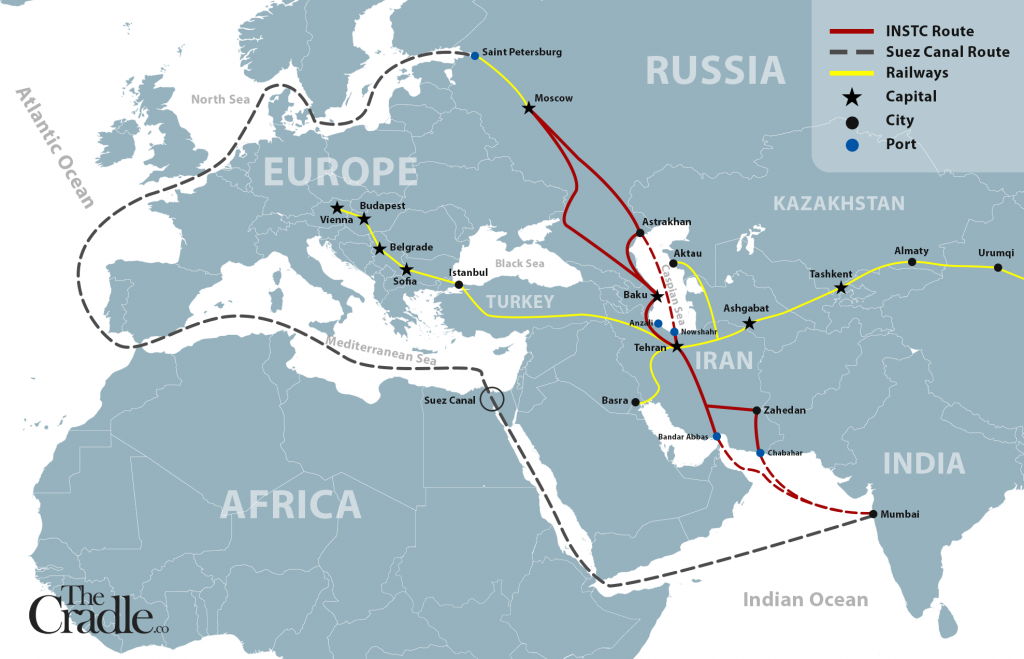
Despite being far from complete, goods moving across the INSTC from India to Russia have already finished their journey 14 days sooner than their Suez-bound counterparts while also seeing a whopping 30 percent reduction in total shipping costs.
These figures are expected to fall further as the project progresses. Most importantly, the INSTC would also provide a new basis for international win-win cooperation much more in harmony with the spirit of geo-economics unveiled by China’s Belt and Road Initiative (BRI) in 2013.
Cooperation not competition
Originally agreed upon by Russia, Iran and India in September 2000, the INSTC only began moving in earnest in 2002 – albeit much more slowly than its architects had hoped.
This 7,200 km multimodal megaproject involves integrating several Eurasian nations directly or indirectly with rail, roads and shipping corridors into a united and tight-knit web of interdependency. Along each artery, opportunities to build energy projects, mining, and high tech special economic zones (SEZs) will abound giving each participating nation the economic power to lift their people out of poverty, increase their stability and their national power to chart their own destinies.
Beyond the founding three nations, the other 10 states who have signed onto this project over the years include Armenia, Georgia, Turkey, Azerbaijan, Kazakhstan, Belarus, Tajikistan, Kyrgyzstan, Oman, Syria and even Ukraine (although this last member may not remain on board for long). In recent months, India has officially invited Afghanistan and Uzbekistan to join too.
While western think tanks and geopolitical analysts attempt to frame the INSTC as an opponent to China’s BRI, the reality is that both systems are extremely synergistic on multiple levels.
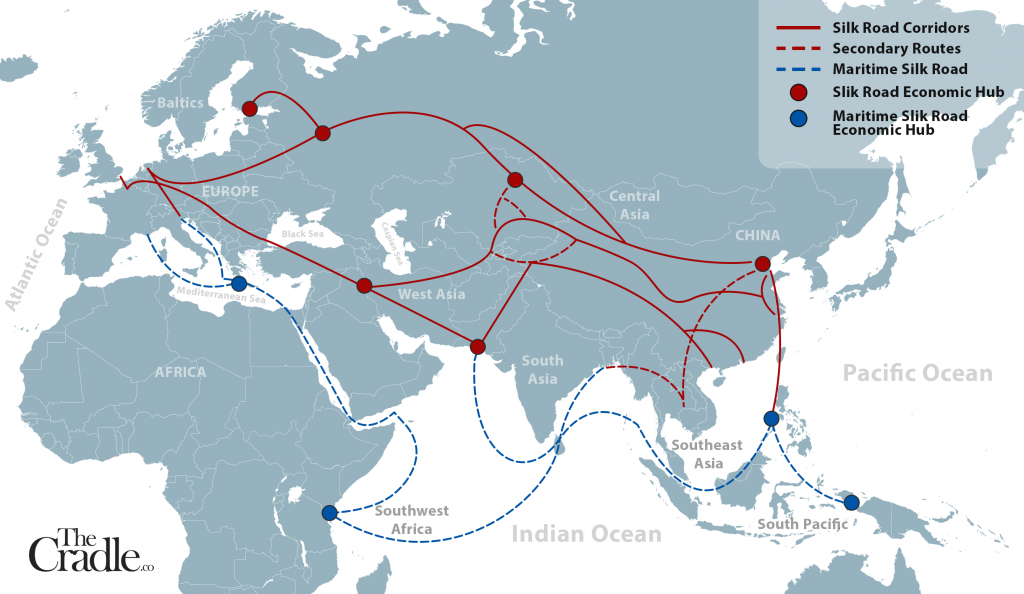
Unlike the west’s speculation-driven bubble economy, both the BRI and INSTC define economic value and self-interest around improving the productivity and living standards of the real economy. While short term thinking predominates in the myopic London-Wall Street paradigm, the BRI and INSTC investment strategies are driven by long-term thinking and mutual self-interest.
It is no small irony that such policies once animated the best traditions of the west before the rot of unipolar thinking took over and the west lost its moral compass.
An integrated alternative
The INSTC’s two major bookends are the productive zone of Mumbai in India’s Southeast region of Gujarat and the northern-most Arctic port of Lavna in Russia’s Kola Peninsula of Murmansk.
This is not only the first port constructed by Russia in decades, but when completed, will be one of the world’s largest commercial ports with an expected capacity to process 80 million tons of goods by 2030.
The Lavna Port is an integral part of Russia’s Arctic and Far East Development vision and is a central piece to Russia’s current Comprehensive Plan for Modernization and Expansion of Main Infrastructure and its Northern Sea Route which is expected to see a five-fold increase of Arctic freight traffic over the coming years. These projects are integrally linked to China’s Polar Silk Road.
Between these bookends, the INSTC moves freight from India into Iran’s Port of Bandar Abbas where it is loaded onto double-tracked rail to the Iranian city of Bafq and then to Tehran before coming to the Anzali Port on the southern Caspian Sea.
‘Be like water’
Because the INSTC is based on a flexible design concept capable of adapting to a changing geopolitical environment (very much like the BRI), there are a multitude of connecting lines that branch off the main North-South artery before goods make it to the Caspian Sea.
These include an eastern and western corridor branching off from the city of Bafq towards Turkey and thence Europe via the Bosporus and also eastward from Tehran to Turkmenistan, Uzbekistan, Kazakhstan and thereafter into Urumqi in China.
Railway is still relevant
From the Anzali Port in the north of Iran, goods may travel by the Caspian Sea towards Russia’s Astrakhan Port where it is then loaded onto trains and trucks for transport to Moscow, St Petersburg and Murmansk. Inversely goods may also travel over land to Azerbaijan where the 35 km Iran Rasht-Caspian railway is currently under construction with 11 km completed as of this writing.
Once completed, the line will connect the Port of Anzali with Azerbaijan’s Baku, offering goods a chance to either continue onwards to Russia or westward toward Europe. A Tehran-Baku rail route already exists.
Additionally, Azerbaijan and Iran are currently collaborating on a vast $2 billion rail line connecting the 175 km Qazvin-Rasht railway which began operations in 2019 with a strategic rail line connecting Iran’s Rasht port on the Caspian to the Bandar Abbas Complex in the south (to be completed in 2025). Iran’s Minister of Roads and Urban Development Rostam Ghasemi described this project in January 2022 saying:
“Iran’s goal is to connect to the Caucasus, Russia, and European countries. For this purpose, the construction of the Rasht-Astara railway is in the spotlight. During the Iranian president’s visit to Russia, discussions were conducted in this regard, and construction of the railway line is expected to begin soon with the allocation of needed funds.”
In recent months, India’s Prime Minister Narendra Modi has lobbied to incorporate the joint Iran-India built Chabahar Port into the INSTC which will likely occur since another 628 km rail line from the port to the Iranian city of Zahedan is currently under construction.
Once completed, goods will easily move onward to the city of Bafq. While some critics have suggested that the Chabahar Port is antagonistic to Pakistan’s Gwadar Port, Iranian officials have constantly referred to it as Chabahar’s twin sister.
Since 2014, a vast rail and transportation complex has grown around the co-signers of the Ashkabat Agreement (launched in 2011 and upgraded several times over the past decade). These rail networks include the 917.5 km Iran-Turkmenistan-Kazakhstan route launched in 2014, and Turkmenistan-Afghanistan-Tajikistan rail/energy project launched in 2016 which is currently seeing extensions that could easily go into Pakistan.
In December 2021, the 6540 km Islamabad to Istanbul rail line (via Iran) recommenced operations after a decade of inaction. This route cuts the conventional sea transit route time of 21 days by half. Discussions are already underway to extend the line from Pakistan into China’s Xinjiang Province linking the INSTC ever more closely into the BRI on yet another front.

Finally, June 2022 saw the long-awaited unveiling of the 6108 km Kazakhstan-Iran-Turkey rail line which provides an alternative route to the under-developed Middle Corridor. Celebrating the inaugural 12 day voyage of cargo, Kazakhstan’s President Kasym-Jomart Tokayev stated: “Today, we welcomed the container train, which left Kazakhstan a week ago. Then it will go to Turkey. This is a significant event, given the difficult geopolitical conditions.”
Despite the fact that the INSTC is over 20 years old, global geopolitical dynamics, regime change wars, and ongoing economic warfare against Iran, Syria and other US target states did much to harm the sort of stable geopolitical climate needed to emit large scale credit requisite for long term projects like this to succeed.
Caspian Summit Security breakthroughs
As proof that necessity truly is the mother of invention, the systemic meltdown of the entire post-WW2 edifice has forced reality to take precedence over the smaller-minded concerns that kept the diverse nations of Sir Halford John Mackinder’s “World Island” from cooperating. Among these points of endless conflict and stagnation which has upset great economic potential over the course of three decades, the Caspian zone stands out.
It is in this oil and natural gas rich hub that the five Caspian littoral states (Russia, Iran, Azerbaijan, Kazakhstan and Turkmenistan) have found a power to break through on multi-level security, economic and diplomatic agreements throughout the June 29-30, 2022 Sixth Caspian Summit in Ashgabat, Turkmenistan.
This summit placed a high priority on the INSTC with the region becoming both a north-south and east-west transportation hub. Most importantly, the leaders of the five littoral states made their final communique center around the region’s security since it is obvious that divide-to-conquer tactics will be deployed using every tool in the asymmetrical warfare tool basket going forward.
Chief among the agreed-upon principles were indivisible security, mutual cooperation, military cooperation, respect for national sovereignty, and non-interference. Most importantly, the banning of foreign military from the land and waters of the Caspian states was firmly established.
While no final agreement was reached over the disputed ownership of resources within the base of the Caspian, the stage was set for harmonization of partner states’ security doctrines, a healthy environment was established for the second Caspian Economic Summit which will take place in Autumn of this year and which will hopefully resolve many of the disputes pertaining to Caspian resource ownership.
Although geopolitical storms continue to intensify, it is increasingly clear that only the multipolar ship of state has demonstrated the competence to navigate the hostile seas, while the sinking unipolar ship of fools has a ruptured hull held together by little more than chewing gum and heavy doses of delusion.
Putin Predicts ‘Revolutionary’ Changes
Only “truly sovereign” states will succeed after “enormous” geopolitical transformations, the Russian leader claimed.
Continue reading Putin Predicts ‘Revolutionary’ ChangesWhy NATO Can’t Afford to Have Russia as its Main Enemy
The world is currently changing so rapidly that the term ‘new normal,’ which first appeared in the business realm and later enriched diplomatic slang, has been added to the active vocabulary of not only all those who follow the news, but even those who don’t.
Continue reading Why NATO Can’t Afford to Have Russia as its Main EnemyPutin Tells U.S. to Stop ‘Looting’ Syria
The Russian leader also urged Washington to end its illegal occupation in the Middle Eastern state.
The US must stop “stealing” oil from the Syrian people, Russian President Vladimir Putin warned on Tuesday, after meeting with his Iranian and Turkish counterparts in Tehran.
The three guarantors of the Astana Process also agreed that the US should leave illegally held land in the trans-Euphrates region, and cease making the humanitarian crisis in Syria worse with unilateral sanctions.
“[The US has to] stop robbing the Syrian state, the Syrian people, exporting oil illegally,” Putin told reporters on Tuesday evening. He said this is the “common position” of Russia, Iran, and Turkey.
Several hundred US troops are illegally present in Syria, mainly controlling the oil wells and wheat fields in the country’s northeast, controlled by the Syrian Democratic Forces (SDF) militia since the defeat of Islamic State (IS, formerly ISIS). The US-backed SDF has refused to reintegrate with the government in Damascus, which Washington wishes to see overthrown.
Since 2019, the US has sought to punish anyone trying to assist the reconstruction of war-torn Syria via the ‘Caesar Syria Civilian Protection Act’, accusing the government of President Bashar Assad of war crimes and blocking all assistance to Damascus.
‘Future of Syria must be defined by Syrians themselves’ – Putin
— RT (@RT_com) July 19, 2022
At the summit with Turkish and Iranian counterparts, Putin highlighted that the three nations are set to take measures to promote a dialogue within Syria and that efforts to resolve Syrian crisis are effective. pic.twitter.com/BsXlBdcAio
Putin said on Tuesday that such sanctions have had “disastrous results” and that humanitarian aid to Syria “should not be politicized.”
During Tuesday’s summit in Tehran, Putin met with Iranian President Ebrahim Raisi and Turkey’s Recep Tayyip Erdogan. In a joint declaration, the three presidents confirmed their conviction that “there can be no military solution to the Syrian conflict,” only a political solution under the leadership of the UN. They also condemned the “unilateral sanctions violating international law,” which are exacerbating the humanitarian situation in Syria, urging the UN and other international organizations to “increase assistance to all Syrians, without discrimination, politicization and preconditions.”
Russia sent an expeditionary force to Syria in September 2015 at the request of Damascus, to help defeat IS and other terrorist groups. In January 2017, Moscow, Ankara, and Tehran launched the Astana Process – named after the capital of Kazakhstan – to resolve the conflict in Syria, which began in 2011.
In Eurasia, the War of Economic Corridors is in Full Swing
Mega Eurasian organizations and their respective projects are now converging at record speed, with one global pole way ahead of the other.
The War of Economic Corridors is now proceeding full speed ahead, with the game-changing first cargo flow of goods from Russia to India via the International North South Transportation Corridor (INSTC) already in effect.
Very few, both in the east and west, are aware of how this actually has long been in the making: the Russia-Iran-India agreement for implementing a shorter and cheaper Eurasian trade route via the Caspian Sea (compared to the Suez Canal), was first signed in 2000, in the pre-9/11 era.
The INSTC in full operational mode signals a powerful hallmark of Eurasian integration – alongside the Belt and Road Initiative (BRI), the Shanghai Cooperation Organization (SCO), the Eurasian Economic Union (EAEU), and last but not least, what I described as “Pipelineistan” two decades ago.
Caspian is key
Let’s have a first look on how these vectors are interacting.
The genesis of the current acceleration lies in Russian President Vladimir Putin’s recent visit to Ashgabat, Turkmenistan’s capital, for the 6th Caspian Summit. This event not only brought the evolving Russia-Iran strategic partnership to a deeper level, but crucially, all five Caspian Sea littoral states agreed that no NATO warships or bases will be allowed on site.
That essentially configures the Caspian as a virtual Russian lake, and in a minor sense, Iranian – without compromising the interests of the three “stans,” Azerbaijan, Kazakhstan and Turkmenistan. For all practical purposes, Moscow has tightened its grip on Central Asia a notch.
As the Caspian Sea is connected to the Black Sea by canals off the Volga built by the former USSR, Moscow can always count on a reserve navy of small vessels – invariably equipped with powerful missiles – that may be transferred to the Black Sea in no time if necessary.
Stronger trade and financial links with Iran now proceed in tandem with binding the three “stans” to the Russian matrix. Gas-rich republic Turkmenistan for its part has been historically idiosyncratic – apart from committing most of its exports to China.
Under an arguably more pragmatic young new leader, President Serdar Berdimuhamedow, Ashgabat may eventually opt to become a member of the SCO and/or the EAEU.
Caspian littoral state Azerbaijan on the other hand presents a complex case: an oil and gas producer eyed by the European Union (EU) to become an alternative energy supplier to Russia – although this is not happening anytime soon.
The West Asia connection
Iran’s foreign policy under President Ebrahim Raisi is clearly on a Eurasian and Global South trajectory. Tehran will be formally incorporated into the SCO as a full member in the upcoming summit in Samarkand in September, while its formal application to join the BRICS has been filed.
Purnima Anand, head of the BRICS International Forum, has stated that Turkey, Saudi Arabia and Egypt are also very much keen on joining BRICS. Should that happen, by 2024 we could be on our way to a powerful West Asia, North Africa hub firmly installed inside one of the key institutions of the multipolar world.
As Putin heads to Tehran next week for trilateral Russia, Iran, Turkey talks, ostensibly about Syria, Turkish President Recep Tayyip Erdogan is bound to bring up the subject of BRICS.
Tehran is operating on two parallel vectors. In the event the Joint Comprehensive Plan of Action (JCPOA) is revived – a quite dim possibility as it stands, considering the latest shenanigans in Vienna and Doha – that would represent a tactical victory. Yet moving towards Eurasia is on a whole new strategic level.
In the INSTC framework, Iran will make maximum good use of the geostrategically crucial port of Bandar Abbas – straddling the Persian Gulf and the Gulf of Oman, at the crossroads of Asia, Africa and the Indian subcontinent.
Yet as much as it may be portrayed as a major diplomatic victory, it’s clear that Tehran will not be able to make full use of BRICS membership if western – especially US – sanctions are not totally lifted.
Pipelines and the “stans”
A compelling argument can be made that Russia and China might eventually fill the western technology void in the Iranian development process. But there’s a lot more that platforms such as the INSTC, the EAEU and even BRICS can accomplish.
Across “Pipelineistan,” the War of Economic Corridors gets even more complex. Western propaganda simply cannot admit that Azerbaijan, Algeria, Libya, Russia’s allies at OPEC, and even Kazakhstan are not exactly keen on increasing their oil production to help Europe.
Kazakhstan is a tricky case: it is the largest oil producer in Central Asia and set to be a major natural gas supplier, right after Russia and Turkmenistan. More than 250 oil and gas fields are operated in Kazakhstan by 104 companies, including western energy giants such as Chevron, Total, ExxonMobil and Royal Dutch Shell.
While exports of oil, natural gas and petroleum products comprise 57 percent of Kazakhstan’s exports, natural gas is responsible for 85 percent of Turkmenistan’s budget (with 80 percent of exports committed to China). Interestingly, Galkynysh is the second largest gas field on the planet.
Compared to the other “stans,” Azerbaijan is a relatively minor producer (despite oil accounting for 86 percent of its total exports) and basically a transit nation. Baku’s super-wealth aspirations center on the Southern Gas Corridor, which includes no less than three pipelines: Baku-Tblisi-Erzurum (BTE); the Turkish-driven Trans-Anatolian Natural Gas Pipeline (TANAP); and the Trans-Adriatic (TAP).
The problem with this acronym festival – BTE, TANAP, TAP – is that they all need massive foreign investment to increase capacity, which the EU sorely lacks because every single euro is committed by unelected Brussels Eurocrats to “support” the black hole that is Ukraine. The same financial woes apply to a possible Trans-Caspian Pipeline which would further link to both TANAP and TAP.
In the War of Economic Corridors – the “Pipelineistan” chapter – a crucial aspect is that most Kazakh oil exports to the EU go through Russia, via the Caspian Pipeline Consortium (CPC). As an alternative, the Europeans are mulling on a still fuzzy Trans-Caspian International Transport Route, also known as the Middle Corridor (Kazakhstan-Turkmenistan-Azerbaijan-Georgia-Turkey). They actively discussed it in Brussels last month.
The bottom line is that Russia remains in full control of the Eurasia pipeline chessboard (and we’re not even talking about the Gazprom-operated pipelines Power of Siberia 1 and 2 leading to China).
Gazprom executives know all too well that a fast increase of energy exports to the EU is out of the question. They also factor the Tehran Convention – that helps prevent and control pollution and maintain the environmental integrity of the Caspian Sea, signed by all five littoral members.
Breaking BRI in Russia
China, for its part, is confident that one of its prime strategic nightmares may eventually disappear. The notorious “escape from Malacca” is bound to materialize, in cooperation with Russia, via the Northern Sea Route, which will shorten the trade and connectivity corridor from East Asia to Northern Europe from 11,200 nautical miles to only 6,500 nautical miles. Call it the polar twin of the INSTC.
This also explains why Russia has been busy building a vast array of state-of-the-art icebreakers.
So here we have an interconnection of New Silk Roads (the INSTC proceeds in parallel with BRI and the EAEU), Pipelineistan, and the Northern Sea Route on the way to turn western trade domination completely upside down.
Of course, the Chinese have had it planned for quite a while. The first White Paper on China’s Arctic policy, in January 2018, already showed how Beijing is aiming, “jointly with other states” (that means Russia), to implement sea trade routes in the Arctic within the framework of the Polar Silk Road.
And like clockwork, Putin subsequently confirmed that the Northern Sea Route should interact and complement the Chinese Maritime Silk Road.
Russia-China Economic cooperation is evolving on so many complex, convergent levels that just to keep track of it all is a dizzying experience.
A more detailed analysis will reveal some of the finer points, for instance how BRI and SCO interact, and how BRI projects will have to adapt to the heady consequences of Moscow’s Operation Z in Ukraine, with more emphasis being placed on developing Central and West Asian corridors.
It’s always crucial to consider that one of Washington’s key strategic objectives in the relentless hybrid war against Russia was always to break BRI corridors that crisscross Russian territory.
As it stands, it’s important to realize that dozens of BRI projects in industry and investment and cross-border inter-regional cooperation will end up consolidating the Russian concept of the Greater Eurasia Partnership – which essentially revolves around establishing multilateral cooperation with a vast range of nations belonging to organizations such as the EAEU, the SCO, BRICS and ASEAN.
Welcome to the new Eurasian mantra: Make Economic Corridors, Not War.
Saudi Arabia Boosts Russian Oil Imports, Frees Up its Supply for the West
US President Biden’s visit to Saudi recently was never about Khashoggi, but about how much oil Saudi Arabia can supply US oil companies for profit. It turns out, the House of Salman only needs to import more Russian oil to augment its own production that was hampered from multiple Yemen attacks on its refineries earlier on.
Continue reading Saudi Arabia Boosts Russian Oil Imports, Frees Up its Supply for the WestVatican Goes Full Technocracy With ‘Council for Inclusive Capitalism’
The idea that there is an agenda for global government among the financial and political elites of the world has long been called a “conspiracy theory” within the mainstream and the establishment media.
Continue reading Vatican Goes Full Technocracy With ‘Council for Inclusive Capitalism’B61-12 MiniNukes to be Used in “A Nuclear First Strike” via Italy, Belgium, Germany, Netherlands
“Production of the B61-12 nuclear bomb begins,” Sandia National Laboratories announced from the United States. The B61-12, which replaces the previous B61 deployed by the U.S. at Aviano and Ghedi and other European bases, is a new type of weapon.
It has a nuclear warhead with four power options, selectable depending on the target to be destroyed. It is not dropped vertically, but at a distance from the target on which it is directed guided by a satellite system. It can penetrate underground, exploding deep to destroy command center bunkers in a nuclear first strike.
The B61-12s, classified as “non-strategic nuclear weapons,” are deployed in Europe — in Italy, Germany, Belgium, the Netherlands, Britain and probably other countries — at distances far enough to strike Russia. They thus have offensive capabilities similar to those of strategic weapons.
Another nuclear weapon system, which the United States is preparing to install in Europe against Russia, is ground-based intermediate-range missiles. They can also be launched from “anti-missile shield” installations, deployed by the U.S. at bases in Deveselu in Romania and Redzikowo in Poland, and aboard five warships cruising in the Mediterranean, Black Sea and Baltic Sea close to Russia.
That such installations have offensive capabilities is confirmed by Lockheed Martin itself. Outlining the characteristics of the Mk 41 vertical launch system, used in both land and naval installations, it specifies that it is capable of launching “missiles for all missions, both defense and long-range attack, including Tomahawk cruise missiles.” These can be armed with nuclear warheads.
Europe is thus being turned by the U.S. into the front line of a nuclear confrontation with Russia, even more dangerous than that of the Cold War.
Russia Explains Deadly Strike on Ukrainian City
Moscow said it targeted a meeting of Kiev’s military commanders with foreign arms suppliers in central Vinnitsa.
Continue reading Russia Explains Deadly Strike on Ukrainian City‘Cost-Free’: Biden Admin May Soon Infuse the IMF with $650 Billion ‘for Ukraine’
Democrats in Congress and their globalist billionaire backers are lobbying the Biden Administration to deploy hundreds of billions of dollars into the International Monetary Fund (IMF). The initiative is being advertised to “save Ukraine” and impoverished nations, but it acts as an instrument to further centralize monetary power.
Continue reading ‘Cost-Free’: Biden Admin May Soon Infuse the IMF with $650 Billion ‘for Ukraine’Hacker Convicted Over Largest Data Theft in CIA History
The agency’s former employee says he’s been made a scapegoat for a massive WikiLeaks exposé.
Continue reading Hacker Convicted Over Largest Data Theft in CIA HistoryThe Fed Just Lobbed A Financial Nuke That Will Obliterate The Global Economy
“Take The Tragedy in Sri Lanka and Multiply By Ten”. We are living in a period of mass “Jonestown” economic delusion. Just twenty months ago – central bankers were offering to buy nearly every junk bond known to mankind, dramatically distorting the “true cost of capital.”
Continue reading The Fed Just Lobbed A Financial Nuke That Will Obliterate The Global EconomyRussia and China Haven’t Even Started to Ratchet Up the Pain Dial Yet
The Suicide Spectacular Summer Show, currently on screen across Europe, proceeds in full regalia, much to the astonishment of virtually the whole Global South: a trashy, woke Gotterdammerung remake, with Wagnerian grandeur replaced by twerking.
Continue reading Russia and China Haven’t Even Started to Ratchet Up the Pain Dial YetThree More Countries Set to Join BRICS
The kingdom of Saudi Arabia, along with Turkey and Egypt, may apply next year, the BRICS Forum president told Russian media.
Continue reading Three More Countries Set to Join BRICSMEET THE EX-CIA AGENTS DECIDING FACEBOOK’S CONTENT POLICY
It is an uncomfortable job for anyone trying to draw the line between “harmful content and protecting freedom of speech. It’s a balance”, Aaron says. In this official Facebook video, Aaron identifies himself as the manager of “the team that writes the rules for Facebook”, determining “what is acceptable and what is not.” Thus, he and his team effectively decide what content the platform’s 2.9 billion active users see and what they don’t see.
Continue reading MEET THE EX-CIA AGENTS DECIDING FACEBOOK’S CONTENT POLICYThe West is Abandoning Ukraine?
On July 7th, Bloomberg News headlined “EU Bureaucracy Seen Blocking 1.5 Billion-Euro Loan to Ukraine”, and reported that, “The executive arm of the European Union is blocking a 1.5 billion-euro ($1.5 billion) loan for Ukraine as caution prevails over the country’s urgent needs, according to officials.”
Continue reading The West is Abandoning Ukraine?Will “Human Sense of Community” & “Spirit of Responsibility” Overcome “Greed for Power and Violence”?
The events of the last two months and years – the doom of arbitrary state measures, mass terror, dictatorship and war – have once again given us a thorough visual lesson in the historical significance of violence.
Continue reading Will “Human Sense of Community” & “Spirit of Responsibility” Overcome “Greed for Power and Violence”?US Plan for Arab Air Defense Pact will Provoke Tensions
Iran’s FM spokesperson said that “foreigners will not create security and stability in the region,” as they are “the main cause of tension and regional rift”.
Continue reading US Plan for Arab Air Defense Pact will Provoke TensionsIran-Russia Interbank Agreement Soon to Be Implemented
The pursuit of inter-banking agreements comes amid efforts by Tehran and Moscow to strengthen their economies and bypass western sanctions.
Continue reading Iran-Russia Interbank Agreement Soon to Be ImplementedAmerica’s $1.4 Trillion “National Security” Budget Makes Us Ever Less Safe
This March, when the Biden administration presented a staggering $813 billion proposal for “national defense,” it was hard to imagine a budget that could go significantly higher or be more generous to the denizens of the military-industrial complex. After all, that request represented far more than peak spending in the Korean or Vietnam War years, and well over $100 billion more than at the height of the Cold War.
Continue reading America’s $1.4 Trillion “National Security” Budget Makes Us Ever Less SafePawns with Lawns
The single most irrigated crop in the United States is (drum roll please) lawn. Yep, 40 million acres of lawn exist across the Land of Denial — and Americans collectively spend about $40 billion on seed, sod, and chemicals each year.
Continue reading Pawns with Lawns

